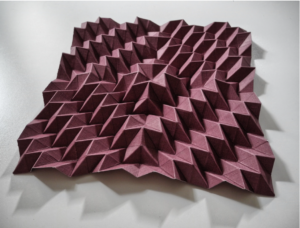Researchers at the University of Washington have developed small robotic devices that can change direction by folding themselves up during mid-air flight. The device has a built-in battery-less drive, solar-harvesting circuit and controller for shape-shifting.
Small robots are dropped from drones and use the Miura-ori origami fold to change direction in mid-air. To stretch the wings, the researchers control the timing of the transition on each device, either using an on-board pressure sensor that estimates the height, a timer or a Bluetooth signal.
The robots weigh about 400 milligrams and can traverse the ground the size of a football field. They also have the ability to carry sensors on board to measure temperature, humidity and other conditions.
“We combine the Miura-ori fold, which is inspired by the geometric patterns found in leaves, to allow our pilots to mimic the flight of different leaves in the air. Going into the folded state changes the airflow around it and allows for a steady descent, similar to the fall of a maple leaf. This very energy-efficient method allows us to control without batteries about a robot landing, which was not possible before,” said co-author Vikram Iyer.
The new robots are rigid enough to prevent accidental transition to the folded state before the signal. The devices’ built-in actuators only need about 25 milliseconds to initiate folding. The robots energy harvesting circuit uses sunlight to power the actuator.
Current microfliers can only move in one direction – from a falling state to a gliding state. Their switch allows researchers to control the descent of multiple devices at once so that they scatter in different directions as they descend. According to the researchers, these devices will be able to move in both directions in the future. This additional feature enables, for example, a more precise landing in turbulent wind.
Source: Science Daily

